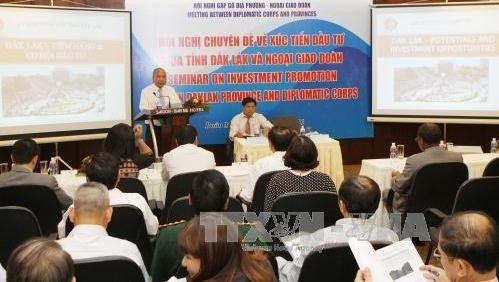Addressing the event, Deputy Foreign Minister Bui Thanh Son briefed participants on the potential of the Central Highland region, towards promoting co-operation and investment with foreign nations through representative agencies in Vietnam.
Mozambican Ambassador to Vietnam Gamiliel Munguambe stressed that the conference offers a chance for international guests to enquire about the region, thus helping to establish investment and trade links with regional localities, especially in the cultivation of commercial plants such as coffee, rubber and pepper, vegetables, flowers, and other farm products.
Comprising the provinces of Dak Lak, Dak Nong, Gia Lai, Kon Tum and Lam Dong, the Central Highlands region covers 54,636 sq.km, making up 16% of the country’s area. The region is home to over 5.6 million people, with 35.29% of those being from ethnic minority groups.
With a favorable geographical location and rich natural resources, the region is said to have great potential for economic and tourism development.
In recent years, the region has recorded strong economic growth, hitting 9% a year. It’s GDP in 2015 had increased 3.6 times compared to 2010.
Despite prolonged drought, the region’s growth reached over 7.2% in the first six months of this year thanks to the localities’ specific measures to stablise the market and resolve difficulties facing enterprises.
The investment climate in the region has improved, with its higher provincial competitiveness index.
At present, the Central Highlands has 577,800 ha of coffee, 259,531 ha of rubber, 53,533 ha of pepper, 23,814 ha of green tea and 76, 516 ha of cashew, along with great areas of other farm products.
















